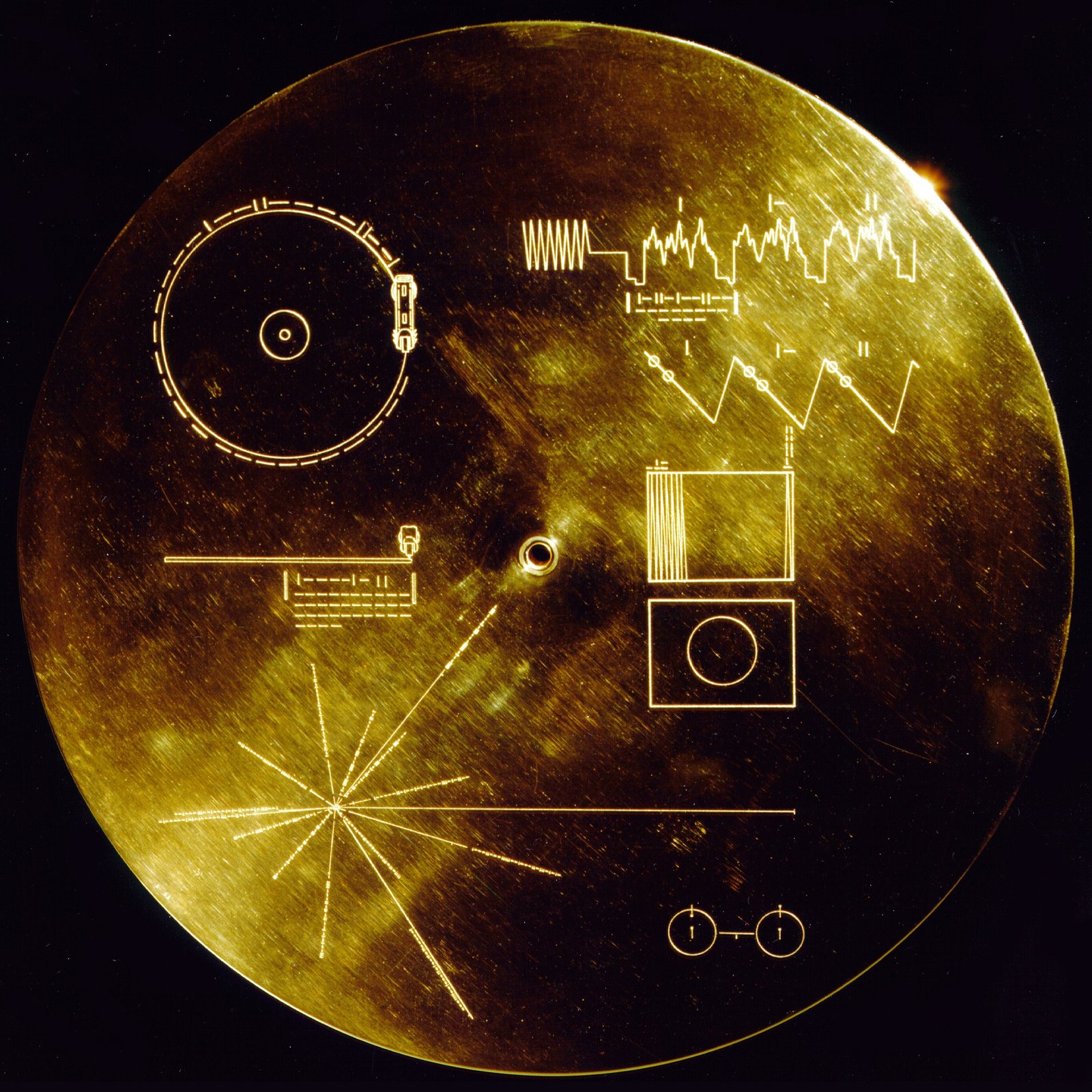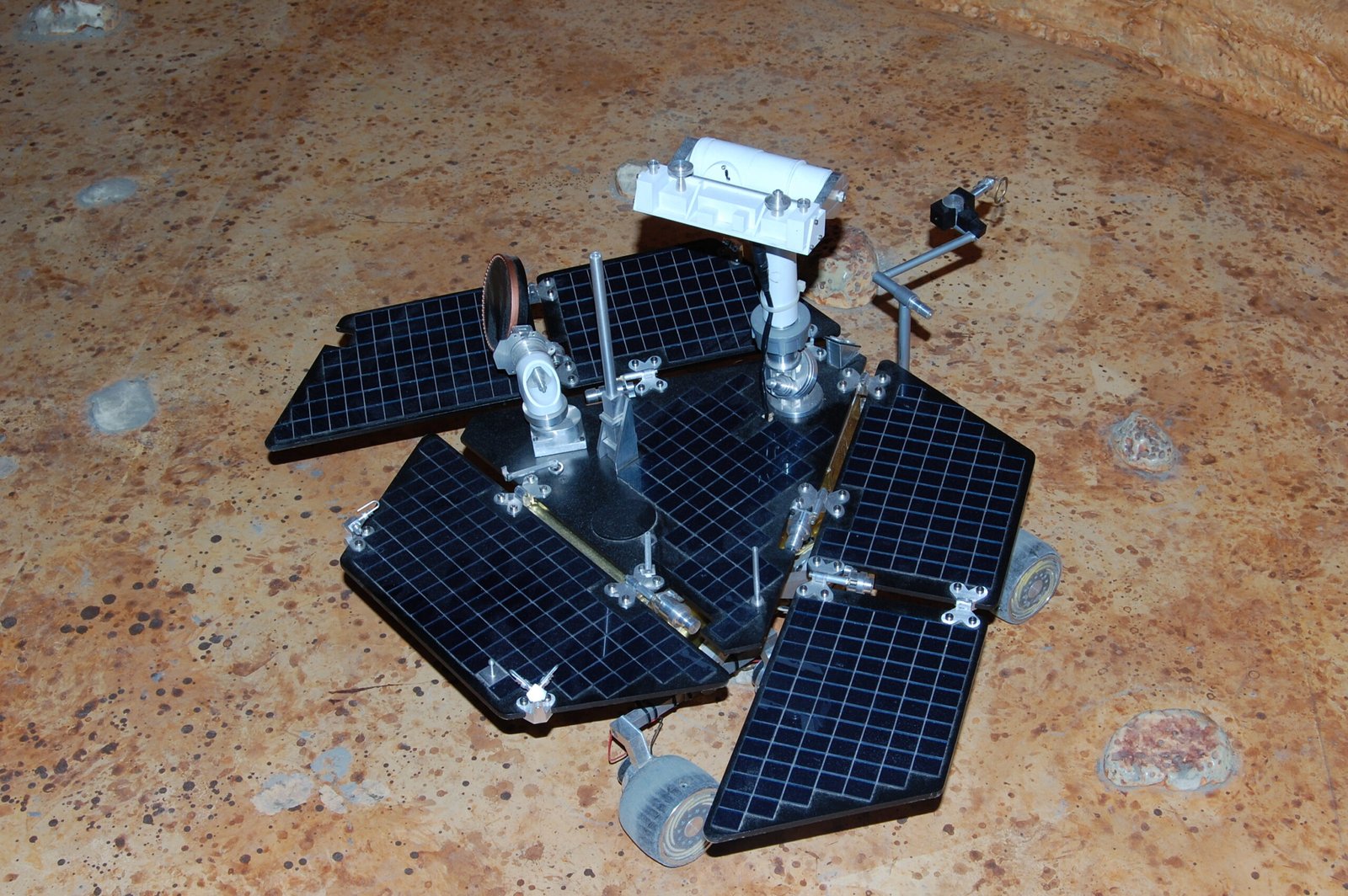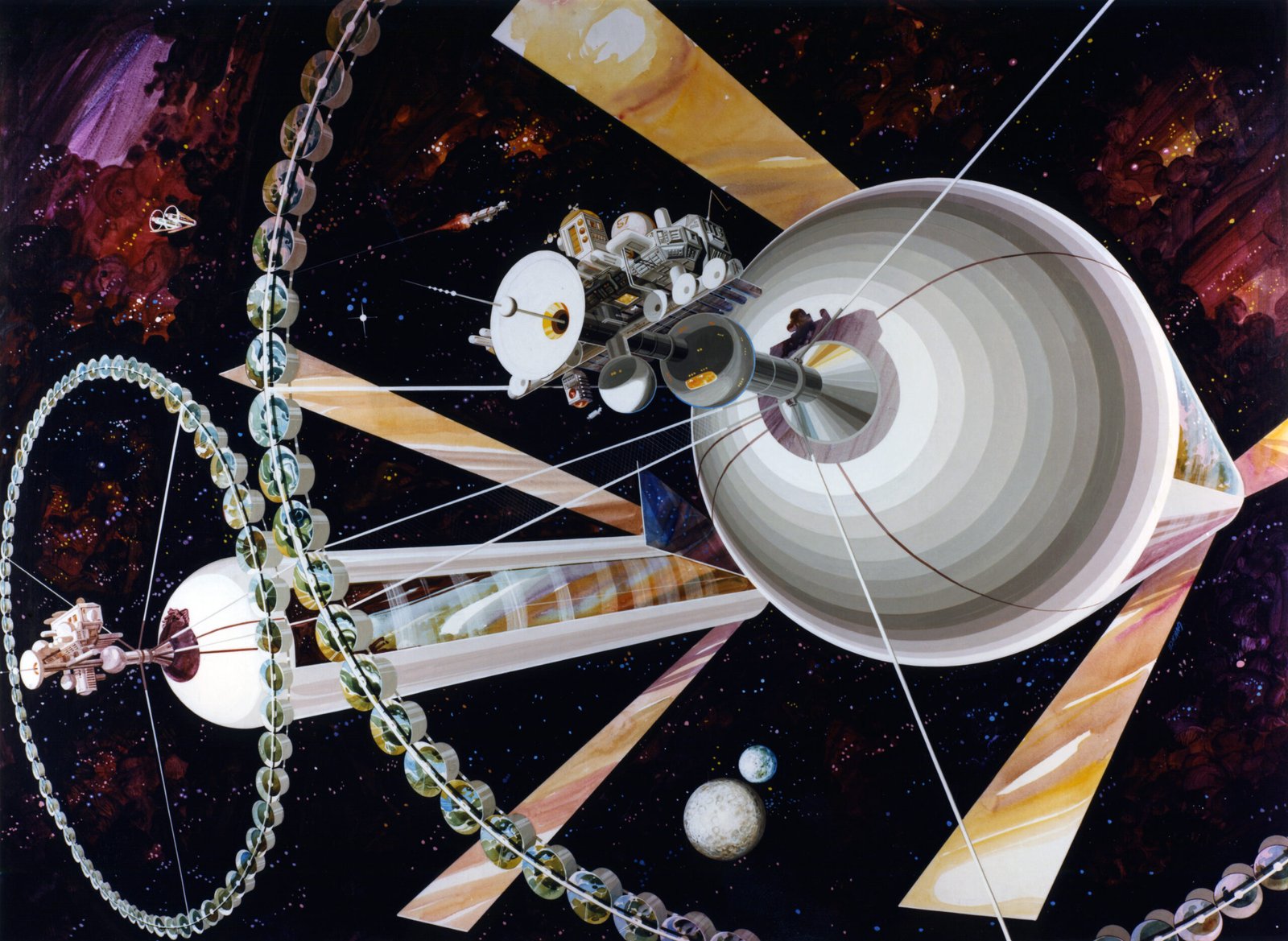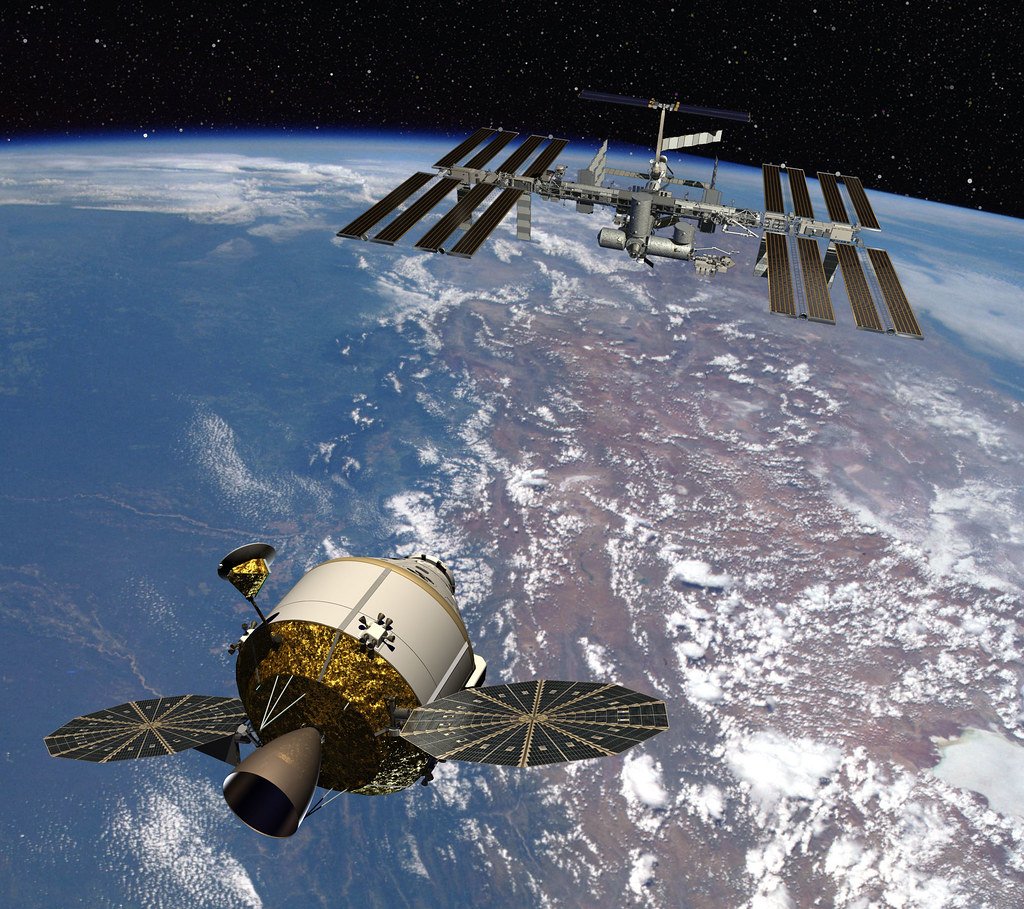Imagine discovering a mysterious object floating through the cosmos, carrying the essence of an entire civilization across the void. Right now, several human-made artifacts are drifting through space, each one a potential archaeological treasure trove for any extraterrestrial intelligence that might stumble upon them. These aren’t just random pieces of technology—they’re carefully curated snapshots of humanity, designed to survive the harsh environment of space for millions of years.
From golden records to spacecraft components, these cosmic messengers represent our deepest hopes of making contact with other intelligent life. But what story would they actually tell about Earth and its inhabitants? What conclusions might alien archaeologists draw from these fragments of human culture and technology?
The Golden Records: Earth’s Greatest Hits

The Voyager Golden Records stand as perhaps the most ambitious attempt to communicate with extraterrestrial life. These gold-plated copper discs, launched aboard Voyager 1 and 2 in 1977, contain a carefully selected collection of sounds, images, and greetings from Earth. The records include everything from Bach’s Brandenburg Concerto to the sound of rain, from mathematical definitions to photographs of human anatomy.
What makes these records particularly fascinating is their attempt to create a universal language through mathematics and physics. The cover includes instructions for playing the record, expressed through hydrogen atom diagrams and mathematical symbols. Alien archaeologists would likely be impressed by humanity’s understanding of universal constants, recognizing our grasp of fundamental physics principles that should be consistent throughout the universe.
Musical Messages Across the Cosmos

The musical selections on the Golden Records reveal profound insights about human culture and emotion. From Beethoven’s symphonies to Chuck Berry’s “Johnny B. Goode,” these pieces showcase the diversity of human artistic expression. Alien archaeologists might puzzle over the mathematical patterns in classical music, wondering if these represent some form of advanced communication or ritual significance.
The inclusion of folk music from various cultures demonstrates humanity’s global diversity, while the presence of both ancient and modern compositions suggests a species that values both tradition and innovation. The emotional range—from somber funeral dirges to joyful celebrations—would paint a picture of beings capable of complex feelings and sophisticated cultural expression.
Greetings in 55 Languages

The linguistic diversity captured in the Golden Records’ greetings section would provide alien archaeologists with fascinating clues about human communication. These brief messages, spoken in languages ranging from Mandarin to Hittite, demonstrate that humanity developed multiple complex communication systems across different regions and time periods.
The fact that all greetings convey peaceful intentions and goodwill might suggest to alien observers that humans, despite their diversity, share common values of friendship and cooperation. The inclusion of ancient languages like Sumerian alongside modern ones like English would indicate a species that preserves its historical heritage while continuing to evolve linguistically.
Images of Life on Earth

The 116 images included on the Golden Records provide a visual encyclopedia of Earth and its inhabitants. From microscopic cells to galaxies, from human anatomy to architectural marvels, these photographs would give alien archaeologists a comprehensive view of our planet’s biological and technological diversity. The sequence progresses logically from the cosmic scale down to human civilization, suggesting a species that understands its place in the universe.
Particularly intriguing would be the images of human reproduction, family structures, and daily activities. These might lead alien archaeologists to conclude that humans are social creatures who form complex relationships and invest significant energy in raising offspring. The photographs of various human ethnicities would demonstrate genetic diversity within a single species.
Pioneer Plaques: Humanity’s Calling Cards

The Pioneer 10 and 11 spacecraft carry simpler but equally profound messages in the form of gold-anodized aluminum plaques. These elegant diagrams show the silhouettes of a man and woman, along with symbolic representations of hydrogen atoms and our location in the galaxy. The nude figures might puzzle alien archaeologists, who would need to decipher whether this represents typical human appearance or ceremonial dress.
The star map showing our sun’s position relative to 14 pulsars would demonstrate humanity’s advanced understanding of stellar navigation and our place in the Milky Way. This level of cosmic awareness might suggest to alien observers that humans are a spacefaring species capable of complex astronomical calculations and long-term thinking about their position in the universe.
Technological Artifacts as Archaeological Evidence

The spacecraft themselves serve as massive technological artifacts that would provide alien archaeologists with insights into human engineering capabilities. The materials used—aluminum, titanium, and various composites—would reveal our metallurgical knowledge and resource utilization. The precision of the manufacturing and the complexity of the systems would suggest an advanced industrial civilization.
The power sources, particularly the radioisotope thermoelectric generators on the Voyager probes, would demonstrate humanity’s mastery of nuclear technology. The fact that these devices were designed to function for decades in the harsh environment of space would indicate sophisticated engineering and long-term planning capabilities.
Evidence of Scientific Method

The scientific instruments aboard these spacecraft would provide compelling evidence of humanity’s systematic approach to understanding the universe. The cameras, spectrometers, and magnetometers would suggest a species that values empirical observation and data collection. The careful calibration and redundancy built into these systems would indicate a methodical, scientific mindset.
The mission profiles themselves—designed to study multiple planets and eventually leave the solar system—would demonstrate humanity’s curiosity about the cosmos and our willingness to invest significant resources in pure scientific exploration. This might distinguish humans from hypothetical alien civilizations focused solely on survival or expansion.
Clues About Human Physiology

The design of the spacecraft would provide alien archaeologists with indirect evidence about human physiology and limitations. The life support systems, radiation shielding, and temperature control mechanisms would suggest that humans are fragile beings requiring very specific environmental conditions. The size and layout of crew compartments would indicate our approximate physical dimensions and basic needs.
The fact that these missions were unmanned might lead alien observers to conclude that humans recognized their biological limitations and developed robotic surrogates for deep space exploration. This would suggest a species capable of creating artificial extensions of their capabilities—a significant technological achievement.
Mathematical and Scientific Literacy

The mathematical concepts embedded in these space artifacts would reveal humanity’s understanding of fundamental principles. From the binary code used in some communications to the geometric relationships shown in the diagrams, these mathematical expressions would demonstrate our ability to think abstractly and work with complex numerical concepts.
The use of universal constants like the hydrogen atom’s hyperfine transition as a measurement standard would show that humans understand the importance of creating reference points that would be meaningful to any technological civilization. This level of mathematical sophistication might suggest to alien archaeologists that humans are capable of advanced theoretical thinking.
Social Organization and Cooperation

The very existence of these space missions would provide evidence of humanity’s ability to organize complex, long-term projects requiring cooperation between thousands of individuals. The international collaboration evident in some space programs would suggest that humans, despite their diversity, can work together toward common goals.
The dedication of resources to projects that wouldn’t benefit the immediate generation might indicate a species capable of long-term thinking and concern for future generations. This would distinguish humans from purely self-interested beings and suggest a complex social structure with shared values and goals.
Religious and Philosophical Implications

Some of the cultural artifacts included in these space capsules hint at humanity’s spiritual and philosophical nature. The inclusion of religious music and references to various belief systems would suggest that humans grapple with questions of meaning, purpose, and transcendence. This might indicate to alien archaeologists that humans are not purely materialistic beings.
The very act of sending these messages into space could be interpreted as a form of cosmic prayer or hope for connection with other intelligent life. This might suggest that humans possess a deep-seated need for communication and understanding that extends beyond their own species.
Environmental Awareness and Planetary Stewardship

The images of Earth’s natural beauty and biodiversity included in these space artifacts would provide evidence of humanity’s relationship with their home planet. The careful documentation of various ecosystems and life forms might suggest that humans recognize the value of their planetary environment and its diverse inhabitants.
However, the fact that these missions were launched during a period of increasing environmental awareness might also lead alien archaeologists to wonder about humanity’s impact on their planet. The juxtaposition of natural beauty with evidence of technological advancement might raise questions about sustainability and environmental stewardship.
Artistic Expression and Creativity

The inclusion of various art forms—from classical music to folk songs, from children’s drawings to architectural photography—would demonstrate humanity’s drive for creative expression. This might suggest to alien observers that humans possess an aesthetic sense and value beauty for its own sake, not just functionality.
The diversity of artistic styles and cultural expressions would indicate that creativity is not limited to a single human culture but appears to be a universal human trait. This might lead alien archaeologists to conclude that artistic expression serves important psychological or social functions in human society.
Communication and Language Evolution

The multiple forms of communication represented in these space artifacts—spoken language, written text, mathematical symbols, and visual imagery—would provide alien archaeologists with insights into human cognitive abilities. The development of written language, in particular, would suggest a species capable of preserving and transmitting knowledge across generations.
The evolution from simple pictographs to complex mathematical notation would demonstrate humanity’s intellectual development over time. This might indicate to alien observers that humans are a species in intellectual transition, still evolving their communication and thinking capabilities.
Technological Timeline and Progress

The various generations of spacecraft and their increasing sophistication would provide alien archaeologists with a timeline of human technological development. The progression from simple metal plaques to complex digital recordings would suggest a species experiencing rapid technological advancement.
The relatively short time span between these missions might indicate that humans are in a period of accelerated technological growth. This could suggest to alien observers that they’re observing a civilization at a critical juncture in its development, possibly transitioning from a planetary to a spacefaring species.
Evidence of Conflict and Cooperation

While these space artifacts primarily showcase humanity’s peaceful intentions, subtle clues might hint at our more complex nature. The emphasis on international cooperation in space exploration, contrasted with the obvious diversity of human cultures and languages, might suggest to alien archaeologists that humans have overcome significant internal divisions to achieve common goals.
The very decision to send peaceful messages rather than aggressive ones might indicate that humans recognize the importance of presenting their best face to the cosmos. This could suggest a species capable of both conflict and cooperation, but one that aspires to peaceful coexistence.
Future Implications and Cosmic Legacy

These space artifacts represent humanity’s first attempt at creating a lasting cosmic legacy. The fact that they were designed to survive for millions of years in space suggests that humans think about their civilization’s long-term impact on the universe. This level of cosmic consciousness might indicate to alien archaeologists that humans are a species worthy of contact and interaction.
The careful curation of these messages also suggests that humans understand the importance of first impressions and want to be remembered favorably by any future discoverers. This might indicate a species that values reputation and legacy, even beyond their own immediate existence.
The Ultimate Archaeological Puzzle

For alien archaeologists, these space artifacts would represent one of the most comprehensive archaeological discoveries possible—a civilization’s deliberate attempt to document itself for posterity. Unlike typical archaeological finds, which often represent fragments of daily life, these artifacts were specifically designed to communicate the essence of human civilization.
The challenge for alien archaeologists would be distinguishing between what humans actually are and what they aspire to be. These carefully curated messages might present an idealized version of humanity, emphasizing our creativity, scientific achievements, and peaceful intentions while downplaying our conflicts and limitations. The true archaeological value might lie not just in what these artifacts reveal, but in what they choose not to show.
These cosmic time capsules represent humanity’s greatest hope and most ambitious gamble—that somewhere in the vast universe, intelligent beings might discover these artifacts and understand something meaningful about who we are and what we’ve accomplished. Whether they paint an accurate picture of humanity or simply our highest aspirations, they serve as extraordinary archaeological treasures that could outlast our entire civilization. What story would you want these silent ambassadors to tell about Earth and its inhabitants?



